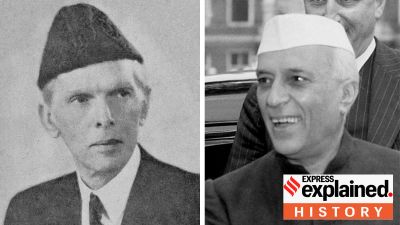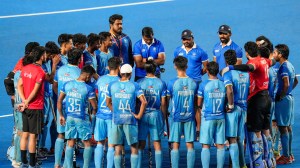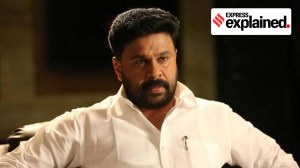‘Debt relief won’t be there every year, it’s just a one-time distress measure’
Finance minister P Chidambaram has been facing fierce criticism for turning budget 2008-09 into a political (‘election year’) exercise.

Finance minister P Chidambaram has been facing fierce criticism for turning budget 2008-09 into a political (‘election year’) exercise. In an exclusive interview with Kandula Subramaniam, the Harvard Business School alumnus tries to explain some of the economics behind his controversial decisions. Excerpts:
• Much of the discussion around your budget has been on the farm waiver package, tax cuts and Pay Commission. But every budget has a broad direction for the economy. What is the big picture story in this budget?
That the growth story is intact, that the growth story has to become more inclusive. The India story cannot have just a few characters, it must have many more characters… the scheduled castes, scheduled tribes, women, minorities, farmers, school leaving children who have to be imparted skills. The message we are sending out is that this government is committed to more inclusive growth.
• You say the growth story is intact, but recent GDP growth numbers show that seven out of eight sectors have suffered a slowdown.
Correct
• Do you think this is a worrying sign?
That is why, anticipating a slowdown in some manufacturing sectors, we have take steps to give a fiscal boost. We have cut customs duties, we have cut excise duties, we have made deeper cuts in some sectors, we have left more money in the taxpayers’ pocket. We hope all this will boost demand.
• So what you are saying is that there will be consumption-led growth?
Investment is intact. Investment to GDP (ratio) is over 36 per cent. There is no indication that investment is slowing down. There are some indications that consumption in some products is slowing down. Therefore, we are giving a boost to consumption. And investment is already there… so between investment and consumption we hope that the growth story will continue.
• Last month you advised banks to increase lending towards consumption.
They have. And they have cut interest rates.
• And now do you see any cuts happening for the real estate sector?
That I cannot say.
• On the farm debt waiver. Don’t you think this will set a bad precedent?
See, when there is demand for debt relief nobody raises this question. When we do it, then immediately the criticism is that it sets a bad precedent. Please understand, debt relief is done only because we feel that the distress of the farmers demands a one-time debt relief. Farmers are honourable people. In normal years they will take loans and repay loans… it is only in extraordinary situations that the farmer finds himself in a position where he cannot repay loans.
When that distress accumulates or spreads to many parts of the country, there is a strong case for debt relief. We have given this debt relief… but that does not mean that every year there will be debt relief. So the question whether “it will it set a bad precedent” is wrong. Rajaji did it… Rajagopalachari did it in 1937. Therefore debt relief is well known in India. It has to be done from time to time. But that does not mean that if you do it once, it will set a bad precedent.
• You said banks would be provided liquidity for the write-off. But from where?
We have done our homework. We will firm up our plans and then we will announce it in the appropriate forum.
But what precautions or steps will the government take so that such a situation does not recur in the farm sector?
That is a question that must be addressed to the minister for agriculture. We have announced a Rashtriya Krishi Vikas Yojana; we have announced a national food security mission; we are providing Rs 25,000 crore for one, Rs 4,882 crore for the other. We have an ambitious accelerated irrigation benefit programme (AIBP) with an outlay of Rs 20,000 crore for next year. All this will hopefully boost agricultural production.
• Again, is it a fair criticism that you have not done much for infrastructure?
Some people don’t take time to read the budget speech.
• You have removed the waiver for CVD for power projects. And this can impact retail tariff. What is the rationale?
The rationale is that it is not a major revenue gainer. Indian power equipment producers must be given a certain level of protection. This is based on the recommendations of the National Manufacturing Competitiveness Council… so we have imposed a 4 per cent CVD to compensate for the VAT that the Indian manufacturer pays.
• This is your 5th straight Budget in the UPA government. Which has been your toughest budget for decisions?
Each budget is prepared in a different context. You can’t compare one with the other. The 2004 budget was pretty tough because it came in the middle of the year. There was rising inflation, investment had come to a grinding halt, and the fiscal deficit was very high. So 2004 posed a challenge. We had to restart the growth process.
Now 2008 is a different kind of challenge. There is this huge problem of farmers… so that is a different kind of challenge. I don’t think you can compare one with the other.
• Given the political contours of your coalition government, what would you have done differently or more boldly if such a coalition was not there.
Again hypothetical. I’m in a coalition. We are bound by an NCMP. I knew that when I took on this job. We know that when we run the government. So we trim our sails according to the wind… what is the point asking what I would have done (differently)… that is hypothetical, that is hypothetical… we trim our sails according to the wind. And it has been a good wind. Our batting average is 8.8 per cent.
• I agree. But if the wind was stronger, you could have gone further?
That is hypothetical. Our batting average with this wind is 8.8 per cent. The batting average of the NDA government was 5.8 per cent.
- 01
- 02
- 03
- 04
- 05































